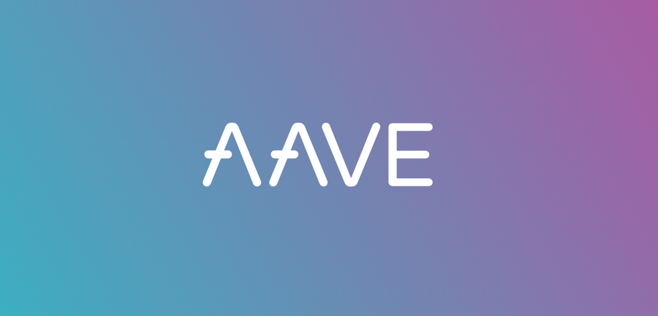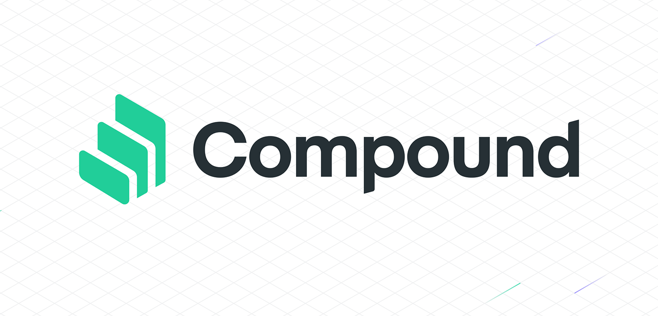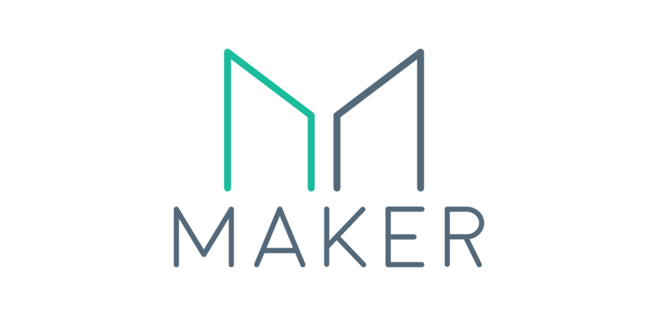Published: 01 Aug 2024
Ratex.ai/
- Blog/
- Business/
- Business Lending and Borrowing in the Age of DeFi: Revolutionizing Financial Services
Business Lending and Borrowing in the Age of DeFi: Revolutionizing Financial Services

Traditional business lending and borrowing have long relied on centralized financial institutions, such as banks and credit unions, to provide necessary capital for growth and operations. This conventional system, while established and widely used, often involves lengthy approval processes, stringent credit requirements, and significant operational costs. For many small and medium-sized enterprises (SMEs), accessing funding through these traditional channels can be particularly challenging.
Enter Decentralized Finance (DeFi), a rapidly evolving sector that leverages blockchain technology to create open, permissionless, and borderless financial services. DeFi operates on the principles of decentralization, transparency, and accessibility, removing the need for intermediaries and enabling peer-to-peer financial interactions. By utilizing smart contracts and decentralized platforms, DeFi is set to revolutionize the way businesses access and manage funding.

Understanding DeFi
Decentralized Finance (DeFi) represents a paradigm shift in the financial industry, leveraging blockchain technology to create a new, open, and permissionless financial ecosystem. Unlike traditional finance, which relies on centralized institutions, DeFi operates on decentralized networks, allowing for peer-to-peer interactions and automated processes through smart contracts.
Definition and Core Components of DeFi
DeFi refers to a collection of financial applications built on blockchain networks, primarily Ethereum, that operate without intermediaries. The core components of DeFi include:
- Smart Contracts
Self-executing contracts with the terms directly written into code, enabling automated transactions and processes without the need for intermediaries.
- Decentralized Applications (dApps)
Applications that run on a blockchain network, offering various financial services such as lending, borrowing, trading, and asset management.
- Tokens
Digital assets that represent various financial instruments and can be traded or used within the DeFi ecosystem. These include cryptocurrencies, stablecoins, and governance tokens.
Key Principles: Decentralization, Transparency, and Accessibility
DeFi is built on three fundamental principles that distinguish it from traditional financial systems:
- Decentralization
DeFi eliminates the need for central authorities by using distributed ledger technology (DLT). This decentralization reduces the risk of single points of failure and increases system resilience.
- Transparency
All transactions and smart contract operations on a blockchain are publicly accessible and verifiable. This transparency fosters trust and allows users to audit processes and verify the legitimacy of transactions.
- Accessibility
DeFi platforms are open to anyone with an internet connection, removing traditional barriers such as geographic location, credit history, and financial status. This inclusivity enables a broader range of users to participate in financial activities.
Overview of DeFi Lending and Borrowing Platforms
DeFi lending and borrowing platforms are among the most prominent applications in the DeFi ecosystem. These platforms connect lenders and borrowers directly through smart contracts, offering a range of financial products and services. Key platforms include:

Aave
A decentralized lending platform that allows users to lend and borrow a variety of cryptocurrencies. Aave offers features such as flash loans, which are instant, uncollateralized loans that must be repaid within a single transaction.

Compound
An algorithmic, autonomous interest rate protocol that enables users to earn interest on their crypto assets and borrow against them. Interest rates are dynamically adjusted based on supply and demand.

MakerDAO
A decentralized credit platform that allows users to generate DAI, a stablecoin pegged to the US dollar, by collateralizing their cryptocurrency assets. MakerDAO employs a governance token, MKR, to manage risk and ensure the stability of DAI.
By leveraging these platforms, businesses can access a wide range of financial services without the constraints of traditional banking systems.

Traditional vs. DeFi Lending and Borrowing
The landscape of lending and borrowing is undergoing a significant transformation with the advent of Decentralized Finance (DeFi). Understanding the differences between traditional financial systems and DeFi is crucial to appreciating how DeFi is revolutionizing business finance.
Comparison of Traditional Lending/Borrowing Processes with DeFi
Traditional lending and borrowing processes differ significantly from those in Decentralized Finance (DeFi). The following points highlight the key distinctions between these two systems.
- Intermediaries
Traditional lending relies heavily on intermediaries such as banks, credit unions, and financial institutions. These intermediaries assess creditworthiness, manage loan approval processes, and handle repayments.
- Speed
The traditional lending process can be slow, often taking weeks or even months for loan approval and disbursement. This delay is due to the extensive documentation, credit checks, and manual processes involved.
- Accessibility
Access to traditional loans is often restricted by stringent credit requirements, geographic limitations, and the need for a significant financial history. Small businesses and individuals in developing regions may find it particularly challenging to secure loans.
- Cost
Traditional loans come with high costs, including interest rates, administrative fees, and other charges. The involvement of multiple intermediaries also adds to the overall cost of borrowing.
DeFi Lending and Borrowing Processes
In contrast to traditional methods, DeFi lending and borrowing leverage blockchain technology to streamline and democratize financial services. The following points outline how DeFi platforms operate, highlighting their lack of intermediaries, rapid transaction speeds and cost-effectiveness.
- Intermediaries
DeFi eliminates the need for traditional intermediaries by using smart contracts that automate lending and borrowing processes. These contracts execute predefined terms without human intervention, ensuring transparency and efficiency.
- Speed
DeFi platforms offer near-instant loan approval and disbursement, as smart contracts handle the entire process. This rapid processing is particularly beneficial for businesses needing quick access to funds.
- Accessibility
DeFi platforms are open to anyone with an internet connection, removing barriers such as credit history, geographic location, and financial status. This inclusivity allows a broader range of users to participate in financial activities.
- Cost
DeFi significantly reduces costs by eliminating intermediaries and automating processes. Borrowers often benefit from lower interest rates and fewer fees, making DeFi a cost-effective alternative to traditional lending.

Key Differences
The distinctions between traditional and DeFi lending and borrowing processes are significant and multifaceted.
- Intermediaries
Traditional lending depends on financial institutions, while DeFi operates on peer-to-peer networks facilitated by smart contracts.
- Speed
Traditional loans involve lengthy approval processes, whereas DeFi provides near-instant access to funds.
- Accessibility
Traditional loans are restricted by credit requirements and geographic limitations, while DeFi is accessible to anyone globally with an internet connection.
- Cost
Traditional loans come with high costs due to multiple intermediaries and administrative fees, while DeFi reduces costs by automating processes and lowering interest rates.
Benefits of DeFi Over Traditional Methods
DeFi offers several significant advantages over traditional financial systems, transforming how businesses and individuals access and utilize financial services.
- Greater Accessibility
DeFi democratizes access to financial services, enabling businesses and individuals worldwide to participate in lending and borrowing without traditional barriers.
- Increased Efficiency
DeFi’s automation of processes through smart contracts ensures quick and seamless transactions, saving time and reducing operational burdens.
- Lower Costs
By eliminating intermediaries, DeFi reduces transaction and administrative costs, providing more affordable financial services.
- Enhanced Transparency
Blockchain technology ensures that all transactions are publicly verifiable and immutable, fostering trust and reducing the risk of fraud.
DeFi presents a compelling alternative to traditional lending and borrowing, offering numerous advantages in terms of accessibility, efficiency, cost, and transparency. As the DeFi ecosystem continues to evolve, its impact on business finance is poised to grow, providing innovative solutions to longstanding challenges in the financial industry.

How DeFi Lending and Borrowing Works
DeFi lending and borrowing rely on smart contracts to facilitate transactions securely and efficiently.
Smart contracts are self-executing contracts with the terms directly written into code. They automatically enforce and execute agreements without the need for intermediaries. In DeFi, smart contracts manage the lending and borrowing process, ensuring transparency, security, and efficiency.
Process of Lending and Borrowing on DeFi Platforms
- Lending:
Users deposit their crypto assets into a DeFi platform's smart contract. The platform pools these assets and lends them to borrowers. Lenders earn interest based on the amount they have deposited and the demand for the asset.
- Borrowing:
Users can borrow crypto assets by providing collateral, typically worth more than the amount they wish to borrow. The smart contract locks the collateral and releases the borrowed amount. Borrowers repay the loan with interest to unlock their collateral.

Benefits of DeFi for Businesses
DeFi offers numerous advantages for businesses, making financial services more accessible, efficient, cost-effective, and secure. The following points detail these benefits and provide examples and case studies to illustrate the impact.
Accessibility
How DeFi Provides Access to Financial Services for Businesses Worldwide
DeFi platforms are open to anyone with an internet connection, enabling businesses globally to access lending and borrowing services without the need for traditional banking relationships.
Example: SMEs Gaining Access to Funds Without Traditional Credit Checks
Small and medium-sized enterprises (SMEs) can obtain loans through DeFi platforms without undergoing stringent credit checks, allowing them to secure funding that might otherwise be unavailable.
Efficiency and Speed
Faster Processing Times Compared to Traditional Banking
DeFi transactions are processed quickly due to the automation provided by smart contracts, significantly reducing the time required for loan approvals and fund disbursement.
Impact on Business Operations and Growth
The rapid access to funds can help businesses capitalize on opportunities, manage cash flow more effectively, and accelerate growth.
Cost Reduction
Lower Transaction and Operational Costs
DeFi eliminates intermediaries and reduces administrative overhead, leading to lower transaction fees and overall cost savings for businesses.
Case Studies Demonstrating Cost Savings
Businesses using DeFi platforms like Aave or Compound have reported significant cost savings compared to traditional lending, enabling them to reinvest the saved capital into their operations.
Transparency and Security
Enhanced Security Through Blockchain Technology
Blockchain technology provides robust security features, reducing the risk of fraud and unauthorized access to financial data.
Transparent and Immutable Transaction Records
All transactions are recorded on the blockchain, ensuring transparency and accountability. This transparency builds trust among stakeholders and simplifies auditing and compliance processes.

Challenges and Risks
While DeFi offers many benefits for businesses, it also presents several challenges and risks that need to be addressed. Understanding these challenges and implementing strategies to mitigate them is crucial for businesses looking to leverage DeFi platforms effectively.
- Regulatory Uncertainty
The regulatory environment for DeFi is still evolving, with different countries adopting various approaches. The lack of clear regulations can create uncertainty for businesses and affect their ability to use DeFi platforms confidently.
Regulatory changes can impact the legality and operational aspects of DeFi platforms, potentially leading to compliance challenges and legal risks for businesses.
- Security Risks
DeFi platforms are susceptible to security breaches, including smart contract bugs, flash loan attacks, and phishing scams. These vulnerabilities can lead to significant financial losses.
Implementing rigorous security audits, using insurance protocols, and adopting best practices for smart contract development can help mitigate security risks. Additionally, businesses should stay informed about potential threats and continuously monitor their DeFi activities.
- Volatility
The value of cryptocurrencies can fluctuate widely, affecting the collateral value and the stability of DeFi loans. This volatility can pose risks to both lenders and borrowers.
Businesses can manage volatility risks by using stablecoins for lending and borrowing, employing over-collateralization, and utilizing hedging strategies to protect against price swings.

The Future of DeFi in Business Lending and Borrowing
As DeFi continues to evolve, several emerging trends and innovations are poised to further revolutionize business lending and borrowing. Innovations such as decentralized autonomous organizations (DAOs), cross-chain interoperability, and the integration of artificial intelligence and machine learning are expected to enhance the efficiency and functionality of DeFi platforms. These advancements will likely lead to more sophisticated financial products and services, further bridging the gap between traditional finance and decentralized finance.
Predictions for the growth and adoption of DeFi in business finance are optimistic. As more businesses recognize the benefits of DeFi—such as greater accessibility, reduced costs, and enhanced transparency—the adoption rate is expected to accelerate. This growth will be driven by both small and medium-sized enterprises (SMEs) seeking alternatives to traditional banking and larger corporations exploring new ways to optimize their financial operations.
The potential impact of DeFi on the global financial system is significant. By providing an open, decentralized alternative to traditional banking, DeFi can democratize access to financial services, particularly in regions where traditional banking infrastructure is lacking. This shift could lead to a more inclusive global economy, where financial barriers are reduced, and more individuals and businesses can participate in the global market.
In conclusion, the transformative potential of DeFi in business lending and borrowing is immense. As the technology continues to mature, it promises to offer more efficient, transparent, and accessible financial services. Businesses stand to benefit from these advancements, gaining access to a broader range of financial tools and opportunities. The future of financial services is likely to be shaped by the continued integration of DeFi, marking a new era in the global financial landscape.

 Get RateX Pro
Get RateX Pro
 06 Jun 2024
06 Jun 2024


